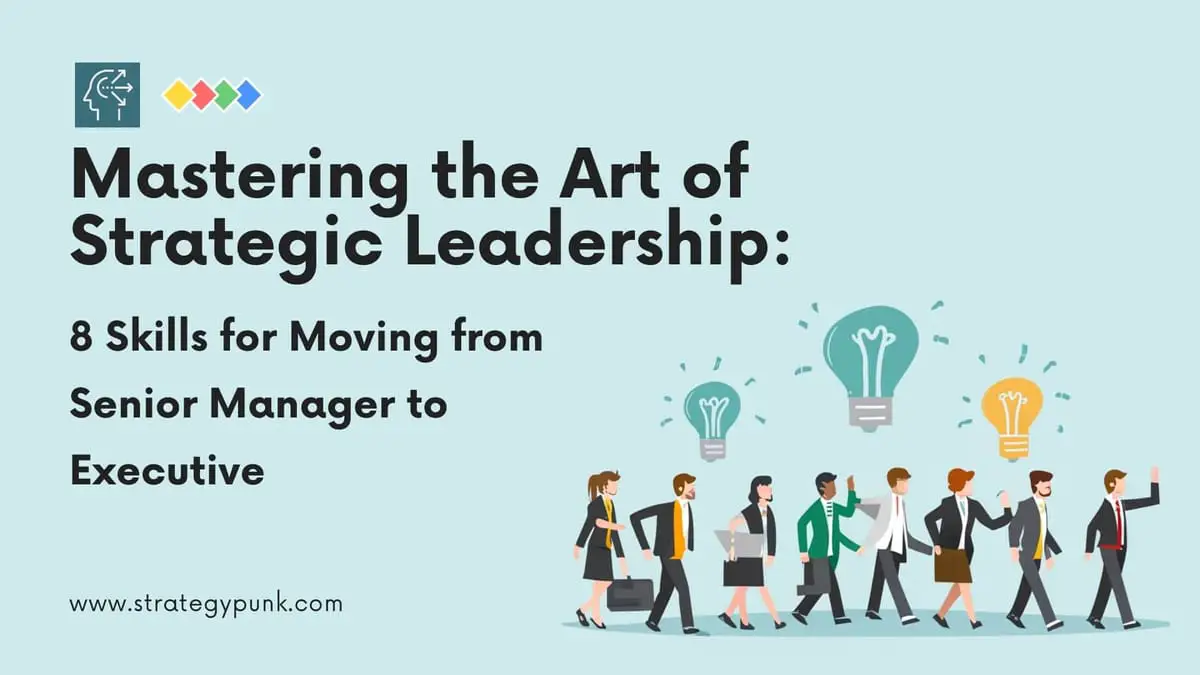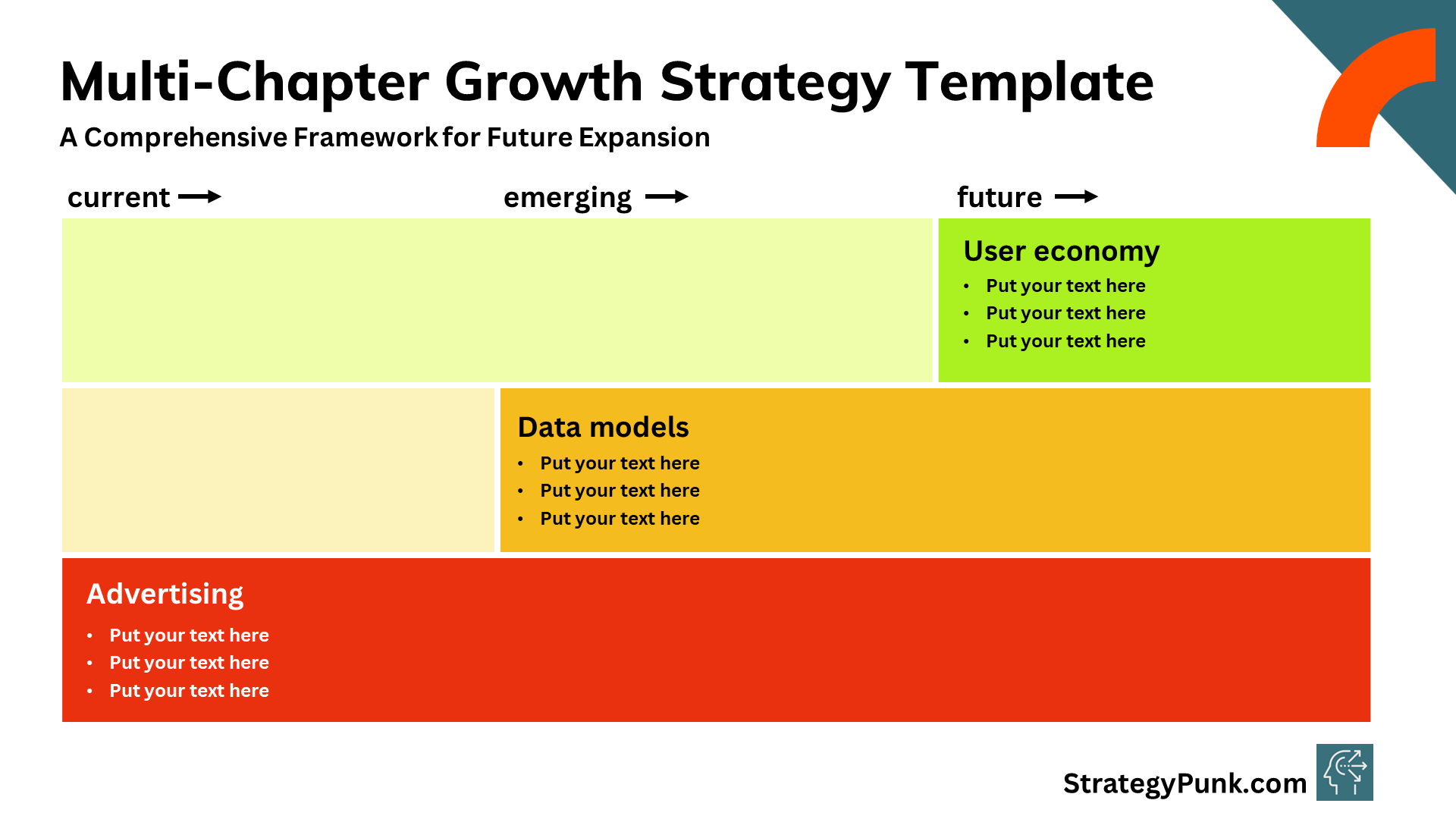Mastering the Art of Strategic Leadership: 8 Skills for Moving from Senior Manager to Executive
Enhance leadership skills with our free guide: 'Mastering Strategic Leadership - 8 Essential Skills for Executives'. Advance from Manager to Exec

The Sound of Opportunity Knocking: Are You Ready to Answer?
The phone rings in your office.
The CEO's assistant is asking you to attend a vital strategy meeting with the senior executive team next week.
Your mind races - could this be the career-advancing opportunity you've been waiting for?
Many ambitious managers aspire to reach the executive suite one day. But wanting a seat at the leadership table isn't enough. You must develop the strategic thinking skills that set executives apart to succeed in the transition.
The good news? While some leaders have an innate talent for strategy, many critical abilities can be learned.
Master these essential competencies, and you’ll announce your executive potential.
Sharpen Your Strategic Vision
Great leaders view challenges and opportunities from a broad perspective. They focus less on day-to-day operations and more on how external market forces may impact the business. Start by regularly analyzing economic, technological, competitive, regulatory, and societal trends. Notice how these macro factors may influence customer needs and preferences in the future.
What emerging trends could disrupt your industry? How might these developments create threats or opportunities in the marketplace?
Let your mind wander as you ponder the forces shaping your business environment. Don't self-censor by limiting your thinking to the existing strategy. And discuss your ideas with colleagues to pressure test your assumptions. You’ll stretch your strategic muscles and expand your peripheral vision by speculating on various scenarios.
Marshaling Change
With an empowering vision and comprehensive strategy, executives must enlist others to turn this vision into reality through organizational change. This depends on persuasion, coalition-building, and conflict resolution to shape consensus amid diverse perspectives.
Driving change requires executive leaders to communicate with clarity, conviction, and inspiration while inviting questions and overcoming reservations. They must assess and appeal to the self-interests of various constituents to demonstrate how the vision benefits all and unify behind it.
This is why influence, emotional intelligence, and relationship-building are vital in the executive suite. Leadership is less about issuing top-down orders than gaining voluntary followership through trust, transparency, and participative decision-making.
Cultivating Future Leaders
Ultimately, an executive’s lasting legacy depends on identifying and preparing the next generation of leadership within the organization. This means moving from mentoring direct reports to fostering leadership capability company-wide through formal programs, job rotations, high-potential development plans, and succession planning.
It also entails creating a leadership culture and talent pipeline that aligns current high-performers with future strategic needs, sustained by ongoing knowledge-sharing, coaching, and career-planning dialogues.
The emphasis here shifts from merely getting the work done to empowering others to do the job more effectively as managers and leaders.
Honing Organizational Awareness
Transitioning into an executive role also demands expanding one’s purview from primarily departmental objectives to enterprise-wide performance and health measures. This means developing organizational awareness of how various functions, divisions, and stakeholders intersect and rely on each other to create value.
Leaders must identify critical interdependencies, points of friction, and information gaps that impede optimal collaboration and idea flow across silos. This allows them to design integrated systems, processes, and communication pathways that bind the organization together as a more harmonious, dynamic, and responsive entity.
Make Tough Trade-Off Choices
Resources are finite, even for large, successful companies. This universal truth demands leaders make intelligent investment trade-offs by determining organizational priorities. Yet choosing between competing interests can feel uncomfortable for managers who are used to avoiding conflict. Learning to lead through these challenging decisions is essential.
Start by identifying conflicting priorities, such as investing in new products versus maximizing short-term profits. Use data to build fact-based cases for alternate paths and foster healthy stakeholder debate.
As Stephen Covey wrote, “Leadership is communicating to people their worth and potential so clearly that they come to see it in themselves.”
Help organizational factions appreciate differing views during this consultative process.
Finally, I dare to decide and commit to the path aligned with mystrategy. Explain the rationale while acknowledging the opportunity cost. With practice, you’ll become more agile in allocating resources to the highest strategic priorities.
Develop a Competitive Moat Mindset
Legendary investor Warren Buffett popularized that companies should build an economic moat to defend their competitive position. Moats widen when firms differentiate in valuable ways that can’t be easily copied. This strategic thinking mentality safeguards market share and profit margins.
Start by identifying your firm’s sources of strategic differentiation and the investments needed to extend your lead. How will you fend off aggressive new entrants not saddled with legacy infrastructure? Could emerging technologies enable more nimble competitors? Challenge assumptions that customers will remain loyal due to high switching costs or lack of alternatives.
Next, brainstorm creative ways to leverage strategic assets like brand, intellectual property, proprietary data, economies of scale, distribution networks, and installed base. Think years out on how to expand the competitive buffer between you and would-be rivals. The executive mind lives in the future.
Playing the Long Game
Ultimately, the divide between leadership and management comes down to a difference in time horizons and priorities.
Managers deliver predictable results through projects; leaders build sustainable capacity through people. Managers improve the present; leaders invent the future. This long view is the most challenging adjustment when first entering the C-suite.
Beyond current quarter results, leaders must judge decisions by multi-year measures of whether they move the organization toward its North Star vision and strategic objectives.
This could mean sacrificing short-term gains for long-range investments that may not pay off right away but are vital to enduring success. True leaders always keep one eye on the horizon while empowering managers to mind day-to-day operations.
Master the Art of Influence
In the transition from manager to executive, positional authority matters less, while the ability to influence without authority becomes critical. Rising leaders must rally support by convincing others to adopt strategic priorities developed at the top. This calls for artful negotiation skills.
First, understand the needs and goals of those you wish to enroll. Ask thoughtful questions and listen intently to grasp hidden motivations and concerns. Next, paint a vivid picture of the future benefits of supporting strategic goals. Share your passion and logic while appealing to emotions. Finally, compromise on tactical details so individuals feel heard and included. This collaborative style earns commitment.
Executive presence further boosts your power to persuade. Speak with confidence using crisp, declarative language. Share compelling stories rich in sensory details. Avoid rambling discourse full of platitudes and abstractions. When others sense your self-assurance, you’ll gain instant credibility.
The Clock Is Ticking
The CEO just emailed that the strategy session starts in 30 minutes.
You straighten your tie and grab your notebook, ready to demonstrate these essential leadership skills.
As you walk down the hall, the sound of opportunity grows louder.
The executive office awaits – are you prepared to step through the door?
Hone these strategic competencies now, and you’ll announce your readiness for greater responsibility.
When the moment arrives, you’ll have the vision, decision-making skills, competitive orientation, and influence ability to succeed in leaping.






